Last updated on April 30, 2024
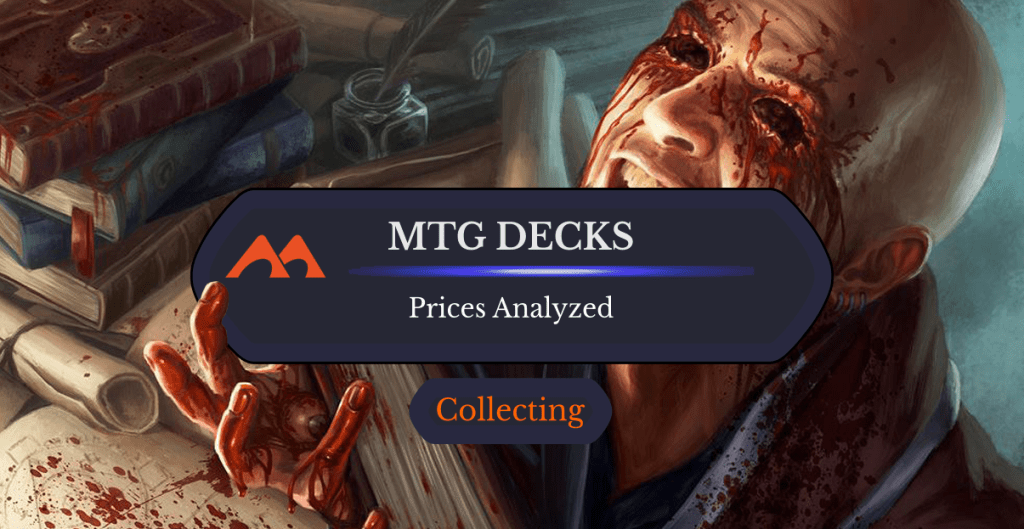
Price of Knowledge | Illustration by Dan Scott
All Magic players eventually seem to realize that this game is expensive. Go on Reddit or any MTG forum, and you’ll see constant, uneasy jokes about how people are missing rent to finish their EDH decks, to buy booster packs they don’t need, etc.
But are these complaints warranted? I wanted to take a deep dive into some numbers for each format and give you the price of an average deck. I use a sampling of current metagames from aggregators like MTGGoldfish and mtgtop8 and focus on paper prices. MTGO ticket prices won’t be mentioned, but they’re usually similar to paper prices. Some are cheaper, and others like Memory Deluge are much more expensive online ($1 vs 20 tix).
Let's get into it!
How Much Does a Magic Deck Cost?
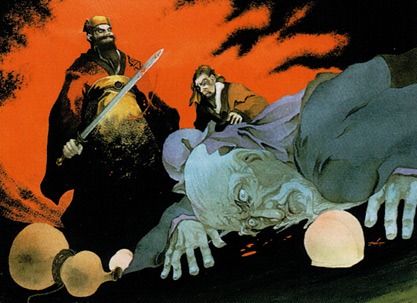
Ambition's Cost (Portal Three Kingdoms) | Illustration by Junko Taguchi
You should expect to pay about $200 to $1,000 for the average Magic deck. The price point generally scales with how old the format is (Modern is more expensive than Standard for instance) and how many staples are in your deck. Some staples are major drivers in deck prices. The estimate isn’t exhaustive though, so expect Pauper and Commander decks in particular to buck this trend.
Standard

Raffine, Scheming Seer | Illustration by Johannes Voss
Standard has had some recent card bans, notably Fable of the Mirror-Breaker, Invoke Despair, and Reckoner Bankbuster. The first two bannings hurt the Rakdos and Grixis Midrange decks the most, while Reckoner Bankbuster is colorless and good enough to include in most decks, hurting deck diversity.
After bannings, there’s a nice, varied mix of decks being played, with aggro, midrange and control all well-represented in some way. Here are 10 current Standard decks and their average prices:
- Mono-Red Aggro ($80)
- Esper Legends ($530)
- Selesnya Enchantments ($170)
- Orzhov Control ($300)
- Azorius Soldiers ($150)
- 4C Ramp ($300)
- Rakdos Midrange ($420)
- Mono-Black Midrange ($390)
- Esper Control ($360)
- Orzhov Midrange ($380)
Analyzing the most expensive Standard decks, Sheoldred, the Apocalypse plays a huge part in driving these prices up. Just a copy costs around $80 and these decks usually play between three and four copies ($240-320)! Other factors responsible for the high deck prices played in today’s Standard format are:
- Lands like: Haunted Ridge, Otawara, Soaring City, Raffine's Tower, Seachrome Coast, Shattered Sanctum, and Plaza of Heroes (around $8-14 each)
- Legends like Adeline, Resplendent Cathar, Raffine, Scheming Seer, and Loran of the Third Path (around $8-13 each)
- Liliana of the Veil ($17)
- Atraxa, Grand Unifier ($19)
- The Wandering Emperor ($20 each, 4 copies in decks like Azorius or Esper Control)
Of note, mono-red is usually a cheap deck because it plays only basic lands and many commons and uncommons, requiring few rares and mythics to work. The most expensive card mono-red runs are 4 copies of Invasion of Tarkir, priced around $10 each.
Standard is currently in a nice spot, and it's possible to see top-tier decks costing between $100-200, while the most expensive deck reaches the $400 range. The banning of Fable of the Mirror-Breaker helped Standard deck prices because four copies of the card cost between $80-100, and that was an auto-include in most top-tier decks.
Pioneer
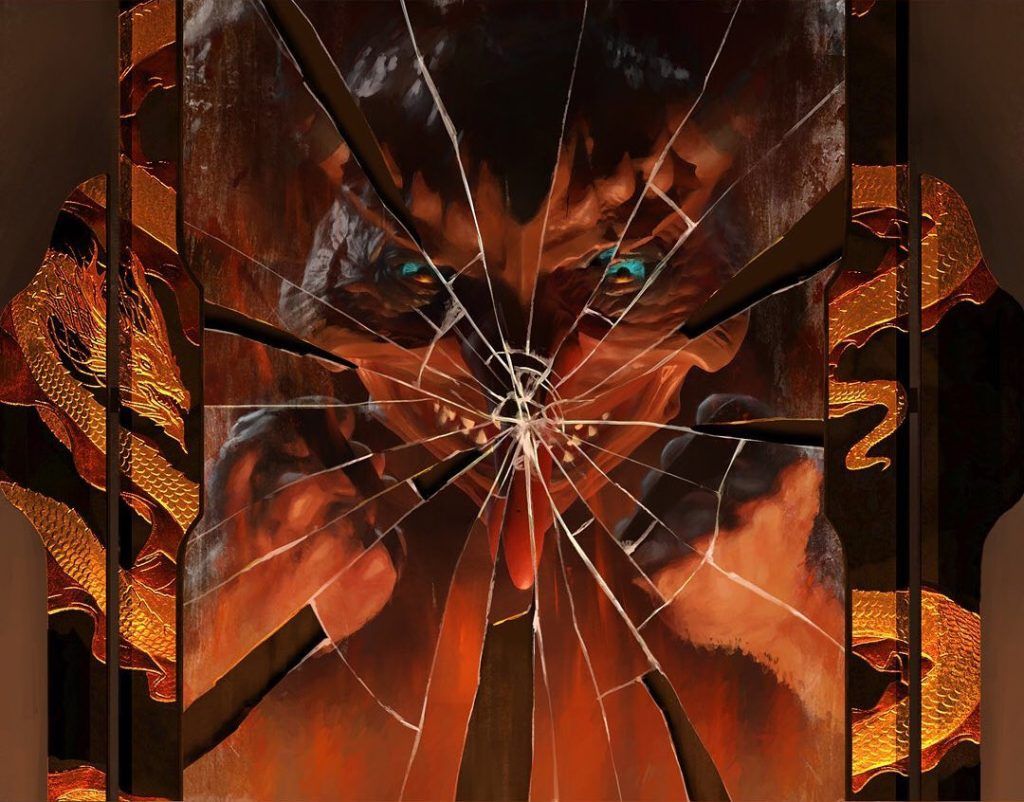
Reflection of Kiki-Jiki | Illustration by Joseph Meehan
The best decks in Pioneer are usually Rakdos Midrange, Mono Green Nykthos Ramp, Azorius Control, and Izzet Phoenix. Here are 10 viable decks and their estimated prices:
The Best Decks in Pioneer
- Rakdos Midrange ($630)
- Nykthos Ramp ($460)
- Mono-White Humans ($210)
- Azorius Control ($440)
- Rakdos Sacrifice ($430)
- Abzan Greasefang ($450)
- Hidden Strings ($300)
- Azorius Spirits ($250)
- 5c Fires of Invention ($600)
- Temur Indomitable Creativity ($540)
Decks in Pioneer are very similar to their Standard counterparts but with the addition of some expensive staples. For example, control adds Teferi, Hero of Dominaria, while Rakdos Midrange decks add Thoughtseize and Fable of the Mirror-Breaker. Considering that Pioneer is an Eternal format and a very popular one, the prices are ok, though. Barring some exceptions, you can still get good Pioneer decks in the $300-450 range.
Modern
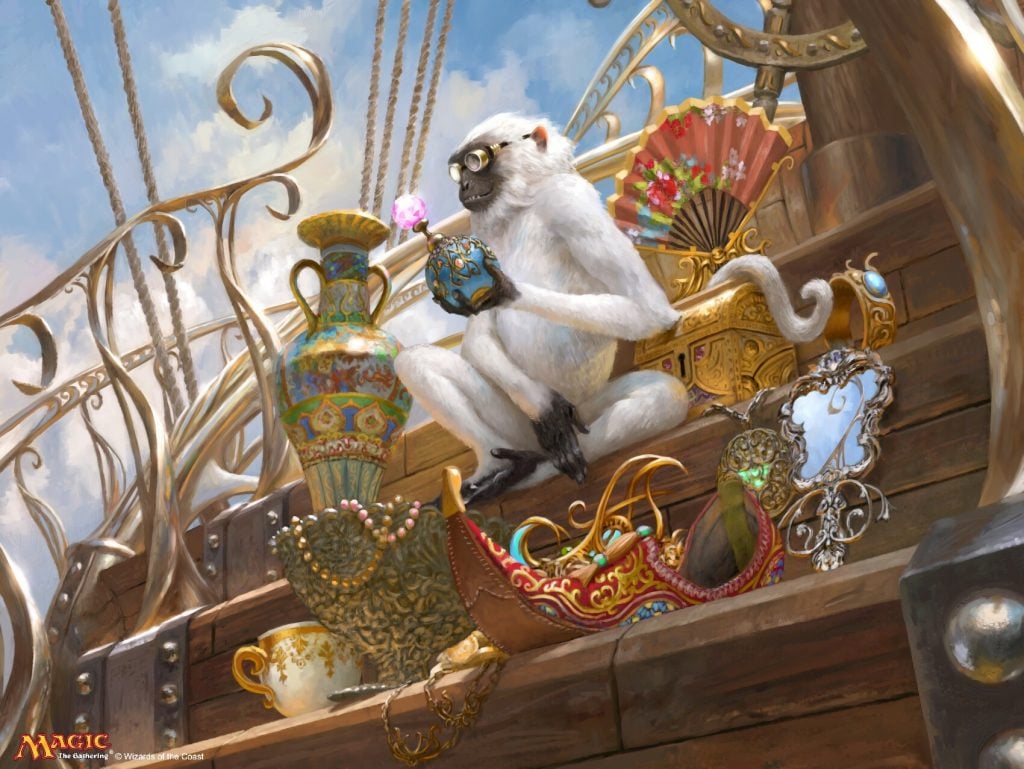
Ragavan, Nimble Pilferer | Illustration by Simon Dominic
Modern is the most played Eternal format in Magic and was shaken up greatly by the release of Modern Horizons 2. MH2 utterly redefined Modern; in fact most of the top played cards in the format now come exclusively from that set! Fury, Endurance, Ragavan, Nimble Pilferer, Solitude, Dragon's Rage Channeler, Murktide Regent… the list goes on.
Modern is a diverse format in terms of decks, but it also has lots of ubiquitous staples that seem to show up all over. These staples are a core driver of high prices, as you can see in this list of 10 viable Modern decks:
- Indomitable Creativity ($1,150)
- Murktide Regent ($1,000)
- Hammer Time ($850)
- Crashing Footfalls ($1,200)
- Living End ($850)
- 4/5C Omnath ($1,600)
- Rakdos Midrange ($1,150)
- Burn ($480)
- Mono-Green Tron ($590)
- Yawgmoth ($880)
Prices in Modern decks are very much influenced by the cost of fetchlands, and Burn doesn’t need as much of these. Burn plays a lot of commons and uncommons like Rift Bolt and Lightning Bolt that are often reprinted. Outside Burn and Mono-Green Tron, expect an average Modern deck to cost in the $800 – 1,000 range.
Unlike what usually happens with Pioneer and Standard, Modern decks have loads of cards that mainly see Modern play, thanks to the extended card pool and expansions like Modern Horizons 1, Modern Horizons 2, and Lord of the Rings: Tales of Middle-earth which were designed with the Modern format in mind, and sometimes make a splash in Legacy, Vintage, or Commander.
Legacy
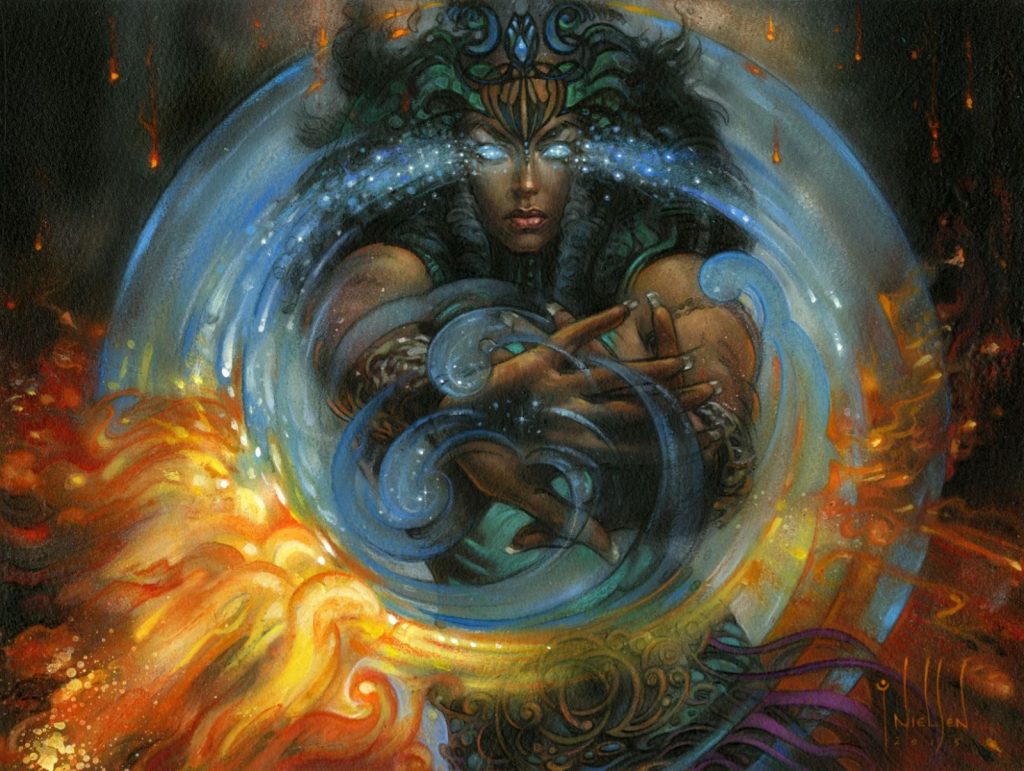
Force of Will | Illustration by Terese Nielsen
Legacy is a costly and exceedingly broad Eternal format, second only to Vintage in terms of how many cards are legal. It has largely been phased out of non-MTGO play in place of Modern/Pioneer, so most players who want to play Legacy at this point are already doing so. Nonetheless, I’d be remiss not to cover it.
To be blunt, “budget” and “Legacy” don’t belong in the same sentence. Here’s why:
- Izzet Delver ($3,800)
- Reanimator ($2,500)
- Cephalid Breakfast ($4,000)
- 8-Cast ($1,900)
- Painter ($2,300)
- Mono-Red Prison ($2,400)
- Death's Shadow ($2,400)
- Death and Taxes ($1,120)
- Lands ($9,200)
- Sneak and Show ($4,500)
The average legacy deck costs over $3,000, about half of what I paid for my used car! If you aren’t playing on Magic Online and haven’t played Magic for decades, it’s exceedingly unlikely you’ll play this format. The costs are just too prohibitive, though I suppose you could build Death and Taxes if you needed something for paper Legacy. D&T is the sole deck on this list with a price comparable to an (expensive) Modern deck.
Bonus round: Here’s a list of Legacy decks by ticket cost:
- Izzet Delver (470 tix)
- Reanimator (430 tix)
- Cephalid Breakfast (380 tix)
- 8-Cast (520 tix)
- Painter (600 tix)
- Mono-Red Prison (500 tix)
- Death's Shadow (400 tix)
- Death and Taxes (310 tix)
- Lands (400 tix)
- Sneak and Show (439 tix)
You can see how substantially prices drop from paper to online because scarcity is far less of a problem with digital objects! If you really want to give Legacy a try, play the format on Magic Online. I’ve heard great things about how intricate the gameplay is, and there are Challenges you can compete in every weekend.
Vintage
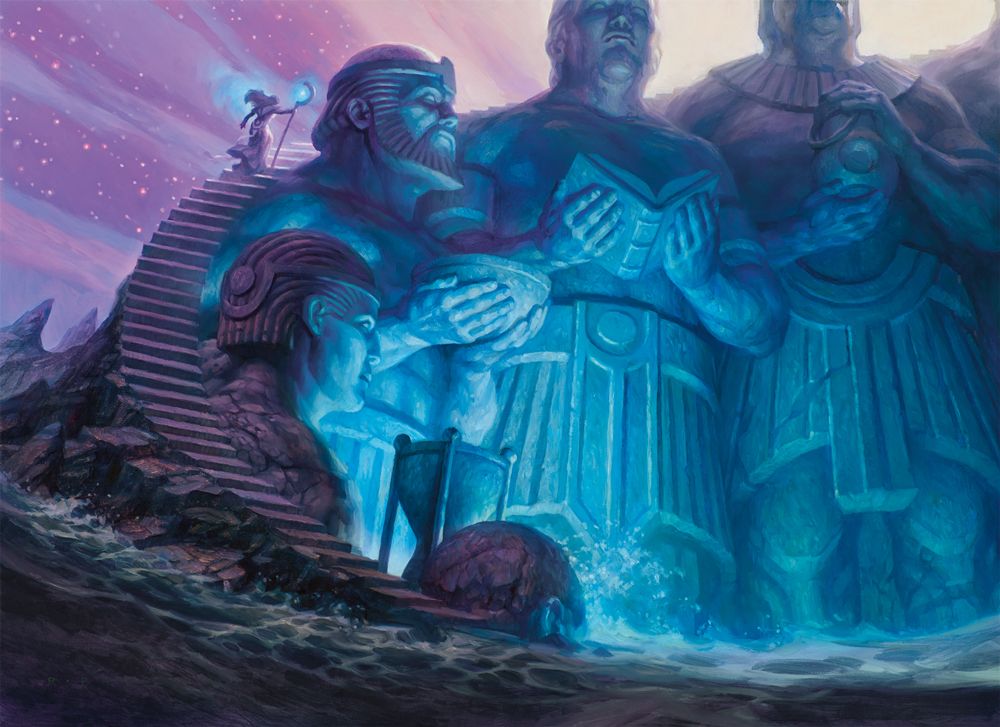
Ancestral Recall (Vintage Masters) | Illustration by Ryan Pancoast
If you thought Legacy was expensive, you ain’t seen nothing yet. Ever dream of owning a deck that costs more than the house you grew up in? Build Prison Shops ($91,000) and you could make that dream a reality.
Some popular Vintage decks are:
- Paradoxical Outcome ($79,000)
- Mono-White Initiative ($58,000)
- Blue Tinker ($68,000)
- Oath of Druids ($71,000)
- Squee Hollow Vine ($12,000)
- Doomsday ($49,000)
- Prison Shops ($76,000)
- Jeskai Control ($59,000)
How did these prices end up so much higher than Legacy, you ask? It all comes down to the Power 9, infamous staples that are in almost every Vintage deck. Black Lotus is the most expensive one at $19,000, followed by Timetwister ($9,600), the 5 Moxen ($5,500 – $8,750), Time Walk ($7,500), and Ancestral Recall ($4,600).
No deck can play more than one of these due to them being Restricted, but they still account for nearly $80,000 of these decks' price tags. Decks below this number still play Power 9, albeit not 9/9 of them. As with Legacy, playing Vintage on Magic Online is much, much cheaper:
- Paradoxical Outcome (434 tix)
- Mono-White Initiative (380 tix)
- Blue Tinker (350 tix)
- Oath of Druids (460 tix)
- Squee Hollow Vine (415 tix)
- Doomsday (300 tix)
- Prison Shops (820 tix)
- Jeskai Control (427 tix)
If you want to play this format, play it on Magic Online, maybe sell some MTGO tickets, or uh, sell your house? This is not a financial advice blog!
Pauper
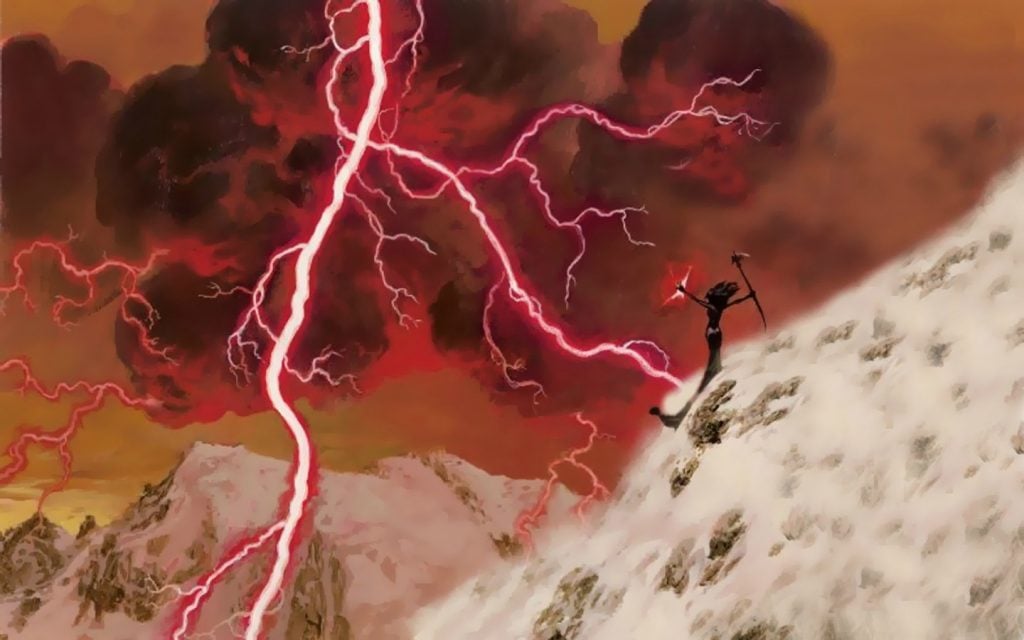
Lightning Bolt | Illustration by Christopher Moeller
Pauper is appropriate after Vintage because it’s even more expensive. Pauper forces you to play only with commons, so there’s a vicious market of speculators that have made the format virtually unplayable. I went to buy a Lightning Bolt the other day at my LGS, and the cashier just laughed at me. Said I couldn’t afford it. I whipped out a $100 bill and he laughed even louder….
Fake stories aside, Pauper is about as cheap as playing MTG gets. The restriction to only commons has the predictable effect of making most decks extremely affordable. Ten viable Pauper decks you could build right at this moment would cost you:
- Burn ($61)
- Boros Synthesizer ($61)
- Dimir Control ($88)
- Jeskai Ephemerate ($57)
- Affinity ($63)
- Gruul Ponza ($77)
- Mono-Blue Faeries ($67)
- Caw-Gates ($80)
- Orzhov Ephemerate ($60)
- Mono-Red Synthesizer ($70)
These prices are a palette cleanser after what Vintage serves: the average Pauper deck is only about $60. Buying an entire deck for the price of a Sheoldred, the Apocalypse is no small feat! Most of the actual price in Pauper decks comes from staples like Chain Lightning, Spellstutter Sprite, Utopia Sprawl, Manamorphose, and Mutagenic Growth. The most expensive of these staples are usually cards that have only been reprinted a handful of times like Utopia Sprawl and Spellstutter Sprite.
Commander
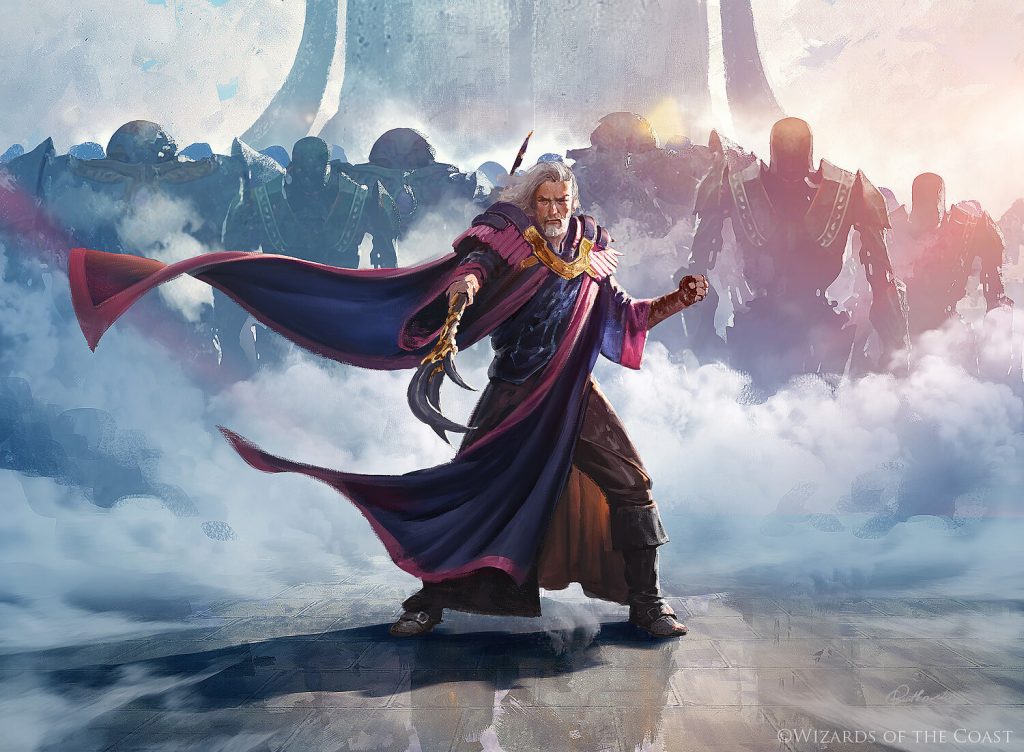
Urza, Lord High Artificer | Illustration by Grzegorz Rutkowski
Arguably Magic’s most popular format, Commander is a casual multiplayer format with an immense amount of gameplay variety. There are all kinds of approaches to Commander, like budget, battlecruiser, competitive, and more. I find it difficult to pin down an exact average for what a Commander deck will cost. Here are some important points about Commander deck prices:
- Commander precons are surprisingly competent products these days and are playable right out of the box. You can often improve these decks greatly with an investment of $30 to $50 (usually by adding a couple staples and improving the mana base). Commander precons range in price from $19 to $40, depending on the deck.
- Adding more colors to a Commander deck tends to increase the budget. Decks like The Ur-Dragon and Jodah, the Unifier average at over $1,000, while a solid 2c deck like Verazol, the Split Current deck would only cost you about $150.
- Commander decks have a ridiculously high theoretical price ceiling because $500+ cards like Lion's Eye Diamond, Tundra, Bazaar of Baghdad, and Timetwister are legal if you wish to play them.
- The return on investment is terrible for all but cEDH. Players use $40-$60 staples like Fierce Guardianship, Mana Drain, and Vampiric Tutor, which are expensive but can dramatically improve your deck. Have you read about budget cEDH decks?
- The best budget for a Commander deck is usually one that matches most of the players you expect to play against. Certain decks are going to cost more than others, but a $10k Kenrith, the Returned King deck would feel out of place against a bunch of upgraded precons!
If you’re interested in buying a whole deck, check out Jake’s guide on places where you can buy new Commander decks. He went into detail on several stores, with expected prices of anywhere from $39 to $400. If you’re new, seriously consider the precons! There’s a lot of variety in them and they have improved immensely since Commander gained official support over a decade ago.
Historic/Alchemy
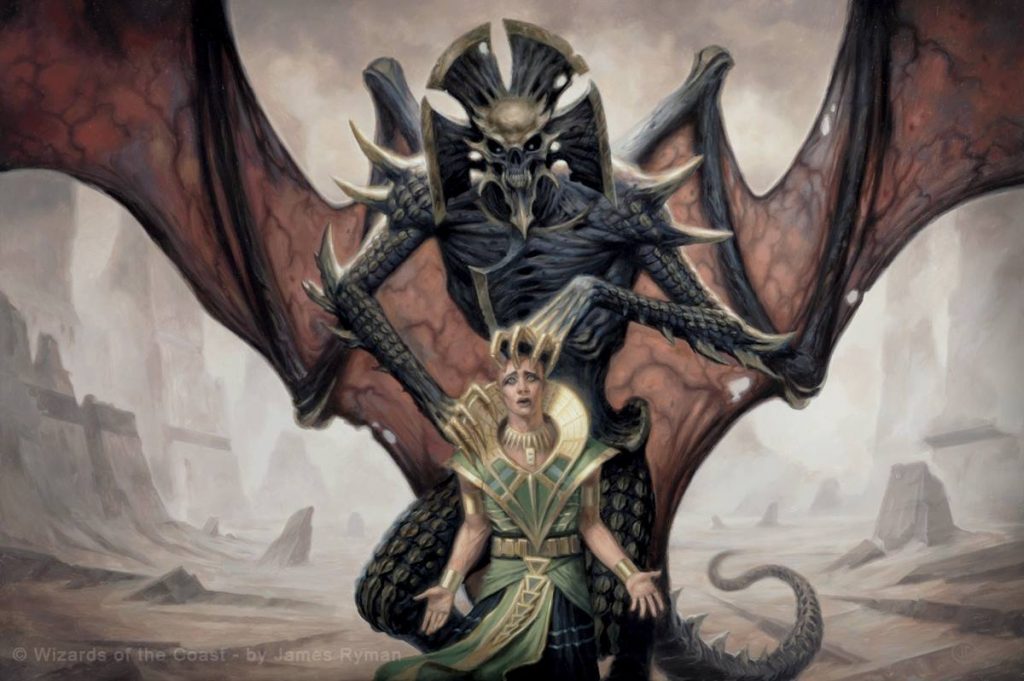
Thoughtseize | Illustration James Ryman
I’m merging these two into one section because both formats are exclusive to MTG Arena. These formats are Arena-only, so separate from MTGO, MTGA has no dollar cost associated with them. You’ll instead find yourself concerned with wildcards, which are the lifeblood of Arena’s crafting system.
Rare wildcards tend to gate players the most often, as constructed decks are often very rare-intensive due to land/staple needs. Mythics can occasionally be an issue for decks with lots of planeswalkers or other mythic staples. Common/uncommon wildcards are easily acquired just by playing Arena and aren’t listed because they won’t usually be an issue. Here are some wild card counts required for 5 Historic decks:
- Rakdos Midrange (48 Rare, 9 Mythic)
- Mono Red (23 Rare, 7 Mythic)
- Izzet Wizards (34 Rare, 1 Mythic)
- Goblins (42 Rare, 0 Mythic)
- Jund Midrange (42 Rare, 19 Mythic)
Alchemy is similar in terms of rare/mythics required, but it’s a less popular format than Historic. There isn’t much data online from deck aggregators, but I’ve borrowed some decks from the most recent Arena Championship:
- 5C Control (56 Rare, 3 Mythic)
- Esper Midrange (50 Rare, 11 Mythic)
- Grixis Midrange (37 Rare, 6 Mythic)
- Monored (27 Rare, 7 Mythic)
- Orzhov Midrange (38 Rare, 10 Mythic)
The main takeaway is that lands are a huge driver of deck prices!There’s a massive jump in rare wild cards that tracks with increasing the number of colors in a mana base. Start with a solid 1/2c deck if you’re on a budget and be prepared to play against those a lot on ladder due to a price bias. You’ll need about 25 rare wildcards for a budget deck and 50 rare wildcards for a midrange deck full of staples and duals. As for mythics, most decks play about 4 to 8 of those, with some like Esper playing up to 17 mythics.
How to Check The Price of Your Deck

Price of Progress (Eternal Masters) | Illustration by Yohann Schepacz
I have a confession: I didn’t have any of these prices memorized before writing. I used deck aggregators like MTGGoldfish and MTG Meta. From here, I was able to see the kinds of decks that are popular in many formats and get price information immediately with a single click. I could even order a deck that caught my attention from these very pages just by clicking the handy “Buy from TCGplayer” link.
If you’re thinking about building a new deck, you can read some guides and familiarize yourself with websites like these to save a bunch of time/money. I highly recommend it!
What’s the Most Expensive Format?
Vintage, by a country mile. For paper play, the formats follow this price hierarchy:
Vintage > Legacy > Modern > Standard/Pioneer > Commander > Pauper
Commander is the most controversial item because it has the greatest price variance of any format. You can build a solid 5-6/10 power level Commander deck for about $150 or less, it could cost you thousands to climb up to 9-10/10 power level. chose to put Commander below Standard/Pioneer because reasonable entry into the format should cost you less on average. You’ll have lots of room for upgrading your deck(s) over time though.
Quick Aside on Limited
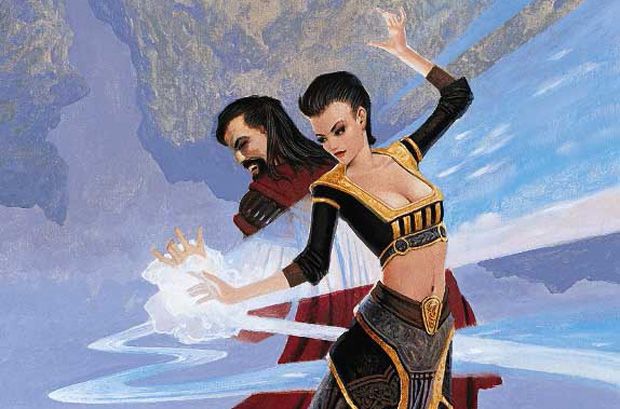
Limited Resources (Exodus) | Illustration by Keith Parkinson
As anyone who has read my columns knows, I love Limited and primarily engage with Magic through 40 card formats. I thought it would be interesting to contrast the costs of Constructed with Limited in a brief fashion.
Think of Constructed vs Limited as upfront investment versus long-term investment. No night of FNM draft will really cost you much on the spot, just $12.50 – $15 for the draft itself. Ignoring the bonuses though, being an FNM regular adds up to $50-60 a month. Constructed, on the other hand, asks that you pay a large upfront cost ($600 Standard, $500 Pioneer, $1,000 Modern to recap) to compete. Once you do that, you’ll pay smaller entry fees (usually $5-6) because you aren’t buying packs each night.
Ignoring water/food expenses, let’s say you buy a $600 Standard deck and go to 60 Standard FNMs at $5 a night. Your buddy also goes, but only drafts for $12.50 a night, with no earlier deck cost. Your total costs would be $600 + $300, and your friend’s costs would be $750.You paid $150 more by this point, but you’ll eventually eclipse your friend in terms of efficiency.
There are a bunch of factors missing from this thought experiment:
- Prize winnings can offset costs
- The value your friend gets from drafting expensive cards
- Your deck’s inherent resale value
- Miscellaneous costs like gas to drive to FNM, water, take-out you regretted ordering, etc.
I won’t make any recommendation as to what format you should be playing. The only rule with Magic is to play formats you both enjoy and can afford.
Wrap Up

Finale of Devastation | Illustration by Bayard Wu
I hope you enjoyed this dive into what kind of cash it takes to compete in the world’s greatest card game. I tried to stay pragmatic, focusing on averages and giving practical advice for players looking to try new formats. Now is a particularly great time to give Standard/Pioneer a try. Standard is in a good spot after bannings, and Pioneer seems healthy/popular. Modern has also seen worse days, though I know that some people miss life before Modern Horizons 2. From the early results, it seems like Lord of the Rings: Tales of Middle-earth will make a noticeable impact there.
Ever have a surprisingly cost-effective deck? What tricks do you use to stay on budget? Let me know below in the comments or join the discussion in the Draftsim Discord.
Until next time, may your budget always allow for you to afford that deck you want!
Follow Draftsim for awesome articles and set updates: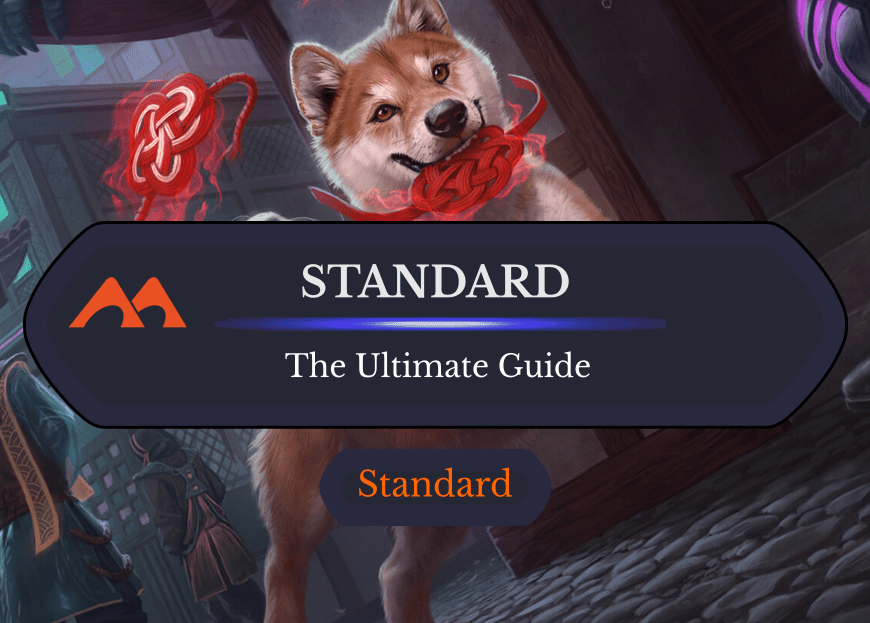

2 Comments
Isn’t The Meathook Massacre banned in standard?
Hi, Breno!
Thanks for reading and paying close attention. The analysis was done before Meathook’s ban in Standard and will be updated later this year with a more current analysis.
Add Comment